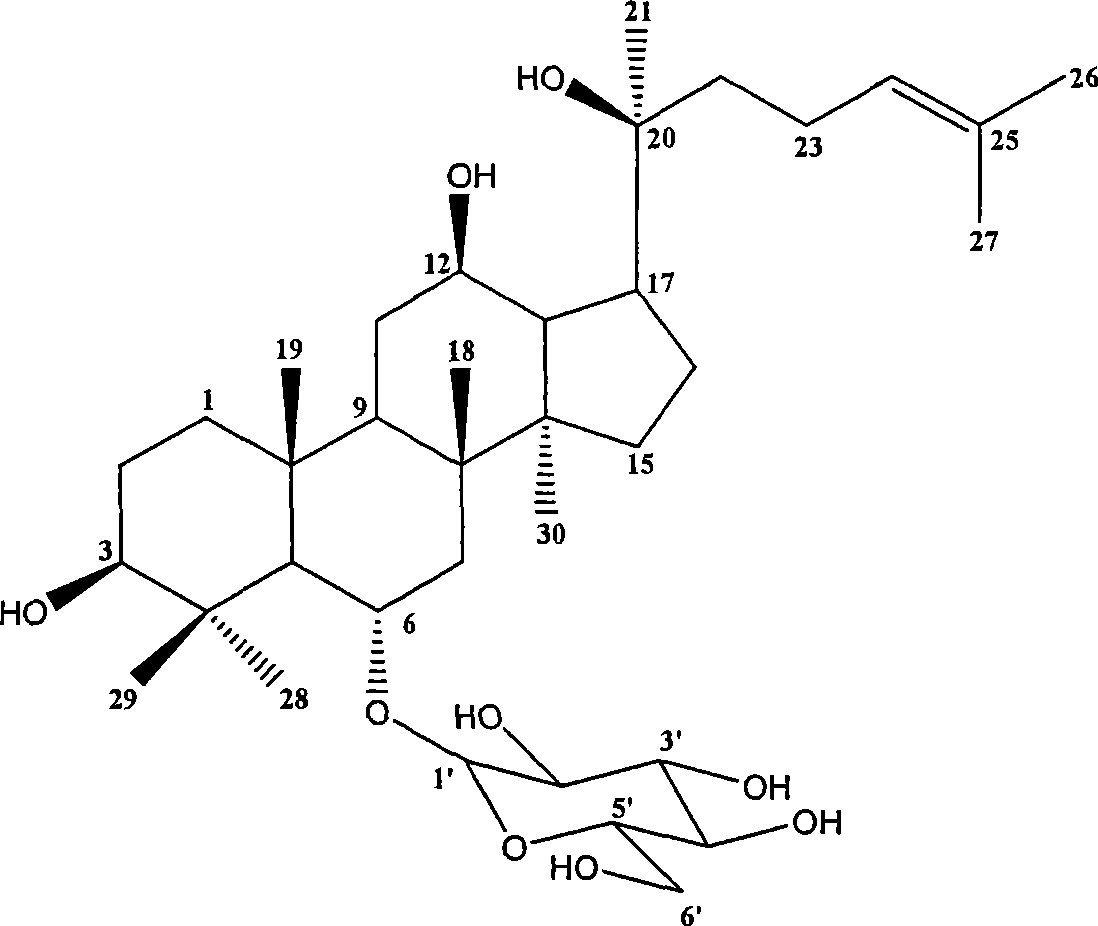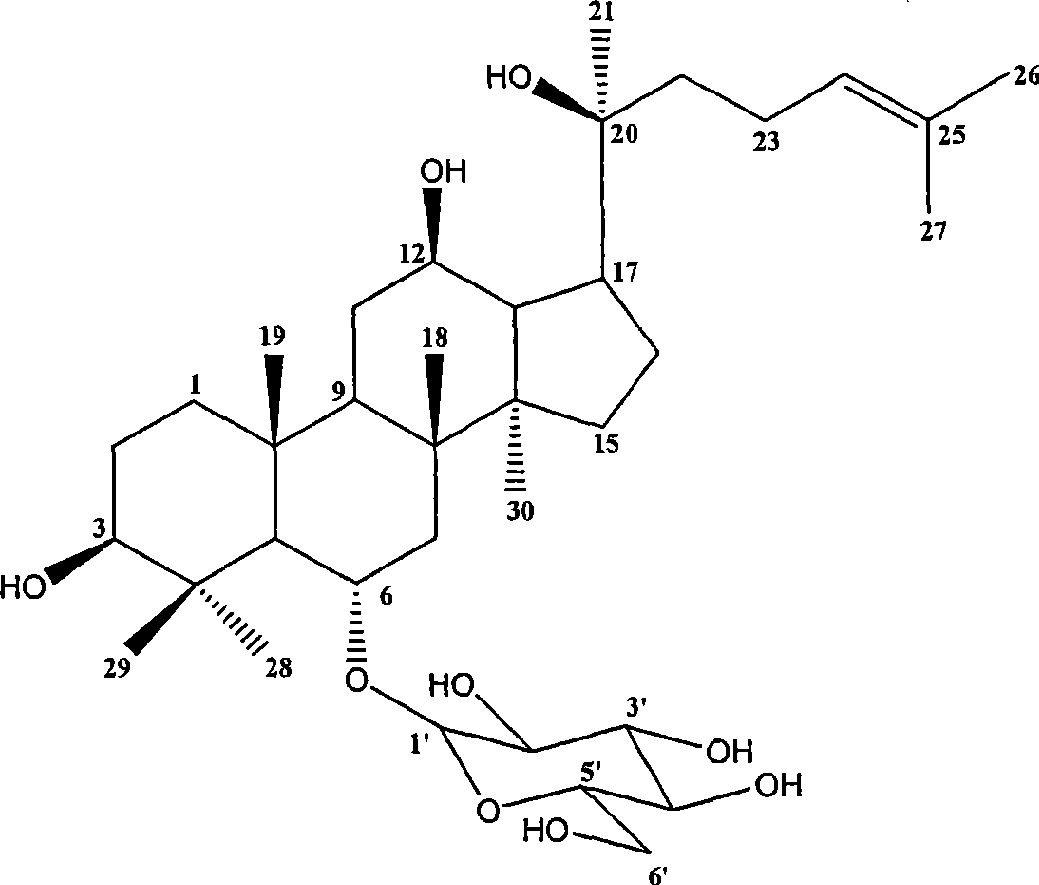Process of preparing 20(S)-ginsenoside Rh1 with streptomycete fermentation of pseudo-ginseng saponin
A technology of notoginseng saponins and ginsenosides, which is applied in the fields of medicine and biology, and can solve problems such as high cost, high price, and inconvenient enzyme sources
- Summary
- Abstract
- Description
- Claims
- Application Information
AI Technical Summary
Problems solved by technology
Method used
Image
Examples
Embodiment 1
[0016] Streptomyces fradiae NTGA-334 was transferred from Gao Shi No. 1 slant to the ISP2 seed medium containing 1% (w / v) Panax notoginseng saponins, cultivated at 28°C for 12h; then inoculated into the seed medium containing 2500g In the 60L humic acid medium of Panax notoginseng saponins, the fermentation was carried out in a 100L fermenter at 28°C. After 36 hours, adjust and increase the ventilation ratio to 1:3 (v / v), and adjust the stirring rate to 400r / min. After 48 hours, adjust the fermentation temperature to 42°C, and dynamically adjust the pH to 5.0 with 5% (w / v) ammonia water. After 60 hours of fermentation, add Amberlite XAD~16 macroporous adsorption resin at 5% (w / v), stir for 2 hours, and put Can. The fermentation broth was filtered through a filter cloth to obtain a precipitate with a wet weight of 3912 g, which was ultrasonically extracted with 30 L of ethanol (95%) for 2 h and filtered through a filter cloth, and the filter residue was washed 5 times with 1 L...
Embodiment 2
[0018] Streptomyces fradiae NTGA-334 was transferred from Gao Shi No. 1 slant to the ISP2 medium medium containing 1% (w / v) panaxatriol group saponins, and cultivated at 28°C for 12h; then inoculated into In a 60L humic acid medium containing 1000g of panaxatriol group saponins, the fermentation was carried out in a 100L fermenter at 28°C. After 36 hours, adjust and increase the ventilation ratio to 1:2, and adjust the stirring rate to 350r / min. After 48 hours, adjust the fermentation temperature to 38°C, and dynamically adjust the pH to 5.0 with 5% (w / v) ammonia water. After 60 hours of fermentation, add Amberlite XAD~16 macroporous adsorption resin at 1% (w / v), stir for 4 hours, and put Can. The fermentation broth was filtered through a filter cloth to obtain a precipitate with a wet weight of 2023 g, which was ultrasonically extracted with 20 L of ethanol (95%) for 2 h and filtered through a filter cloth, and the filter residue was washed 5 times with 1 L of ethanol (95%)....
PUM
 Login to View More
Login to View More Abstract
Description
Claims
Application Information
 Login to View More
Login to View More - R&D
- Intellectual Property
- Life Sciences
- Materials
- Tech Scout
- Unparalleled Data Quality
- Higher Quality Content
- 60% Fewer Hallucinations
Browse by: Latest US Patents, China's latest patents, Technical Efficacy Thesaurus, Application Domain, Technology Topic, Popular Technical Reports.
© 2025 PatSnap. All rights reserved.Legal|Privacy policy|Modern Slavery Act Transparency Statement|Sitemap|About US| Contact US: help@patsnap.com



